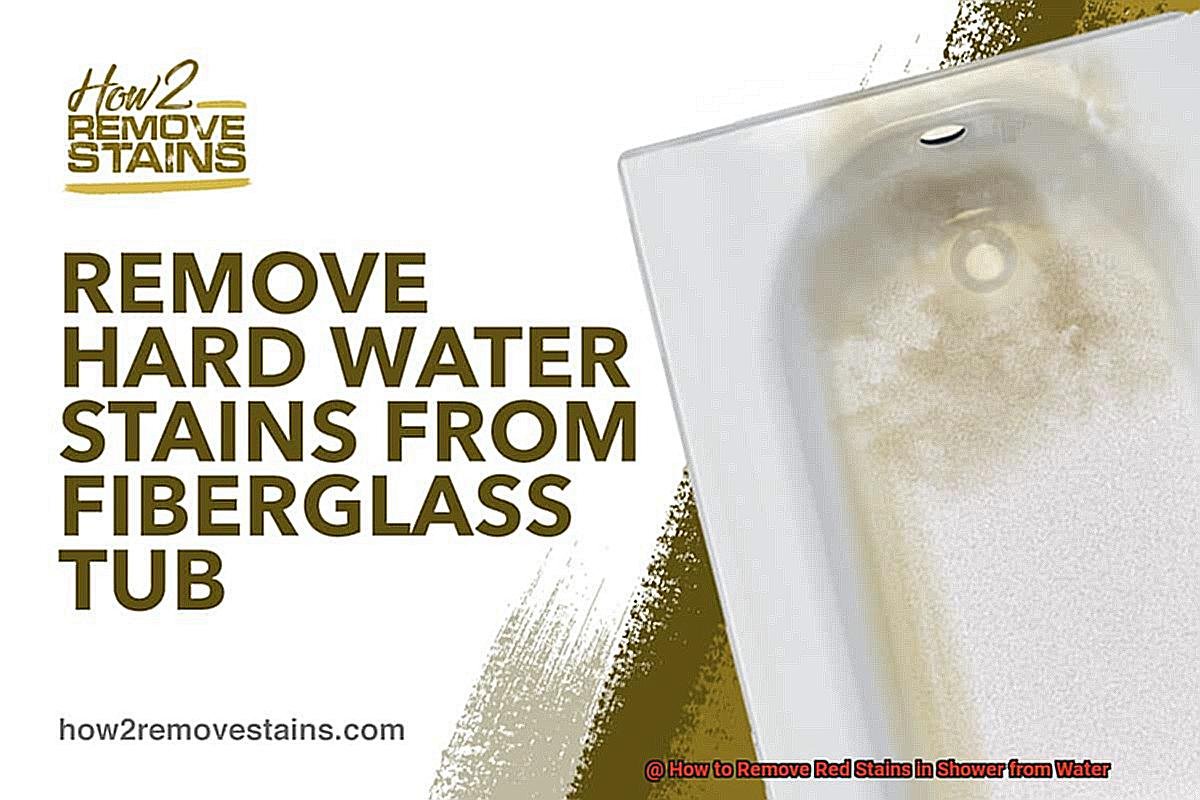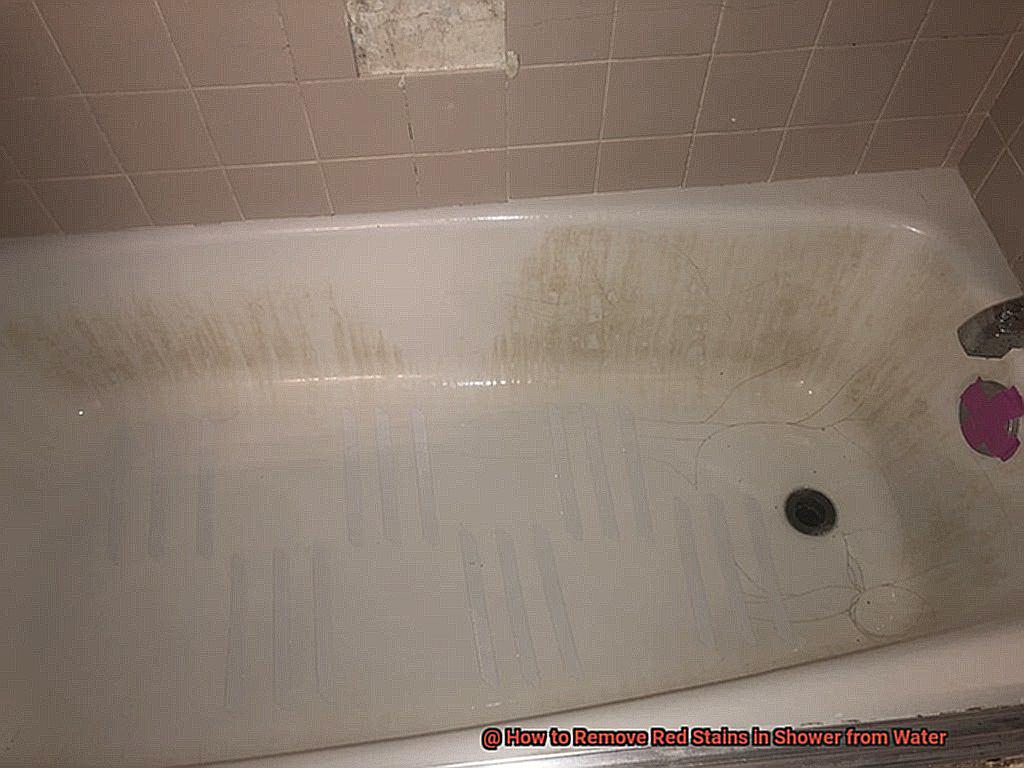Are you dealing with red stains in your shower? It’s an unsightly problem, but don’t worry – it’s possible to get rid of them! In this blog post, we’ll show you how to remove red stains from your shower caused by water using everyday household products.
We’ll also provide tips on how to prevent these stains from coming back.
So if you’re ready to learn how to keep your shower spotless, read on!
Contents
- 1 What Causes Red Stains in Shower from Water?
- 2 How to Identify Serratia marcescens
- 3 Where Can You Find Serratia Marcescens?
- 4 Symptoms of Serratia Marcescens
- 5 Best Ways To Prevent Infection
- 6 Preventative Measures to Avoid Red Stains in Shower from Water
- 7 DIY Solutions for Removing Red Stains in Shower from Water
- 8 Commercial Products and Cleaners for Removing Red Stains in Shower from Water
- 9 Professional Cleaning Services for Removing Red Stains in Shower from Water
- 10 Tips and Advice on Maintaining a Clean, Stain-Free Shower
- 11 Conclusion
What Causes Red Stains in Shower from Water?
It’s likely due to Serratia marcescens, a type of bacteria that thrives in warm, moist environments. This bacteria produces a pigment called prodigiosin, which gives the water a pink to red color.
Not only can it contaminate the water, but it can also leave pink or red stains on surfaces like tile, grout, or caulking.
But there are other potential causes of red staining too.

Iron or manganese deposits from hard water, rust from old pipes, or dye used to treat sewage can all result in discoloration of your shower water.
If you’re unsure what’s causing the issue, it’s best to seek assistance from a licensed professional. They’ll be able to identify what’s causing the issue and help you find an effective solution.
How to Identify Serratia marcescens
To identify this bacteria, you should look for these symptoms and test the water for the presence of the bacteria using a laboratory kit or swab test. The bacteria can be identified by its size (0.5 to 0.8 µm) and shape (rod-shaped), as well as its red pigmentation when grown on certain media.
It can also be identified by its characteristic odor, which has been described as resembling “rotting fish” or “foul smelling cheese.”
Where Can You Find Serratia Marcescens?
Serratia marcescens is typically found in moist and warm environments, such as showers, bathrooms, and laundry rooms. It can also be found in pools, hot tubs, and other water sources.
Symptoms of Serratia Marcescens
The symptoms of Serratia marcescens include red or pink discoloration on surfaces, an unpleasant smell, and a slimy or slippery texture on the surface.
Best Ways To Prevent Infection
The best way to prevent infection from Serratia marcescens is to:
- Keep your house clean and dry at all times.
- Regularly clean shower heads
- Avoid swimming in contaminated waters.
- Take extra precautionary steps if you have an immunocompromised family member living with you.
- Ensure proper drainage.
- If you have an immunocompromised family member living with you, take extra precautionary steps to protect them from infection due to this bacteria’s wide range of temperature and pH levels that make it difficult to remove from water systems.
Preventative Measures to Avoid Red Stains in Shower from Water
This unsightly issue is typically caused by a lack of iron in your water, which can also cause damage to your pipes and fixtures. Fortunately, there are some preventative steps you can take to avoid this problem.
To start, install a water softener system to reduce the amount of iron in your water and maintain the mineral balance. It’s also important to test the water regularly for any changes in pH or mineral levels.
If you spot any leaks or cracks in your pipes, repair them immediately, as this could lead to more staining. Additionally, use a filter to remove any contaminants from the water before it enters your home.
To keep your shower free from red stains, it’s also essential to clean it regularly with a mild detergent and scrub brush. When bathing, opt for cold water instead of hot, which can cause staining.
Finally, an aerator on your shower head will aid in the reduction of mineral deposits that accumulate over time and cause staining.
DIY Solutions for Removing Red Stains in Shower from Water
There are some simple DIY solutions that can help you remove them quickly and easily.
- Chlorine bleach is one of the most effective methods for eliminating red stains. To make a solution, mix 1/4 cup of chlorine bleach with 1 gallon of water and use a sponge or cloth to scrub the stained area.
- Vinegar is another great option for removing red stains from showers. Create a mixture of equal parts white vinegar and water, then apply it to the stained area with a sponge or cloth. Let it sit for 30 minutes before rinsing it off with warm water.
- Baking soda is also an excellent way to get rid of red stains in showers. Make a paste by mixing baking soda and water, then apply it to the stained area with a sponge or cloth. Let it sit for 15 minutes before rinsing it off with warm water.
- Hydrogen peroxide is another popular choice for removing red stains in showers. Mix equal parts hydrogen peroxide and water and apply it to the stained area with a sponge or cloth. Let it sit for 10 minutes before rinsing it off with warm water.
- Finally, lemon juice can be used to remove stubborn red stains from showers. Simply squeeze fresh lemon juice onto the stained area and let it sit for 15 minutes before rinsing off with hot water.
Commercial Products and Cleaners for Removing Red Stains in Shower from Water
These items contain chlorine, bleach, or other harsh chemicals that are effective in removing the red stains. It’s essential to read the product’s instructions carefully and follow them as directed.
Furthermore, make sure to wear protective gear such as gloves and goggles when using these items, as they can be hazardous if used improperly.
Before using a commercial product or cleaner, it’s also a good idea to test it on a small area of the shower first to make sure that it won’t cause any damage or discoloration.
Professional Cleaning Services for Removing Red Stains in Shower from Water
Red stains in your shower from water can be a nuisance, but professional cleaning services can help.

Specialized cleaning agents and tools are used to effectively remove the stubborn stains. The cost of the service will depend on the size and type of stain, as well as how much effort is required to remove it.
Professional cleaners may also provide additional services such as sanitizing, deodorizing, and waterproofing to prevent future staining.
When looking for a cleaner, make sure they are legitimate and trustworthy. With the right professional cleaning products, those red stains will be gone in no time!
Tips and Advice on Maintaining a Clean, Stain-Free Shower
Having a clean, stain-free shower is essential for a healthy and cozy home. But keeping it that way can be a challenge. To help you out, here are 8 tips and advice on how to maintain your shower in top condition.
Regular Maintenance Routine
The key to having a spotless shower is regular maintenance. Start by using a mild detergent and warm water to clean the walls, floors, fixtures, and other surfaces after each use.
This will help prevent the buildup of soap scum and hard water stains that can be difficult to remove later on. Additionally, use a squeegee or cloth to wipe down surfaces after each use for extra protection against staining.
Showerhead Filter
Investing in a good quality showerhead filter will reduce the amount of minerals in the water that can cause staining over time.
This will also help reduce the amount of soap scum buildup on surfaces as well as any hard water deposits that may appear over time.
Anti-Scalant System
Installing an anti-scalant system in your home’s plumbing will help remove mineral deposits from the water before they can cause staining or corrosion on fixtures and tile grout.
This technique works by adding chemicals to the water supply that bind with minerals so they don’t become attached to surfaces when they come into contact with them.
Removing Stains
If you’re looking for stubborn stains on tile grout or fixtures, try using a vinegar solution or baking soda paste to clean them safely without damaging surfaces.
If necessary, consider replacing old fixtures with new ones that are more resistant to staining and corrosion.
Red Stains
To keep your shower free of red stains caused by iron or manganese deposits in hard water, use a mild soap or cleanser and brush or scrubber to remove any dirt, grime, or soap scum from surfaces after each use.
Then rinse the shower with warm water after cleaning and dry it off with a soft cloth afterwards. Also check for leaks in your plumbing system regularly as this can be one of the leading causes of red staining in showers.
Finally, consider using a water softener to reduce mineral deposits in hard water that can cause red staining as well as vinegar solutions for stubborn stains.
Overall, keeping your shower clean and stain-free doesn’t have to be difficult.
Conclusion
Red stains in the shower can be a nuisance, but with just a few simple steps, you can quickly and easily get rid of them.
Start by making a vinegar solution or baking soda paste and apply it directly to the stain. Let it sit for 15 minutes before scrubbing with an old toothbrush and rinsing with hot water.
You can also try using fresh lemon juice – simply squeeze some onto the stain, let it sit for 15 minutes, then scrub with an old toothbrush and rinse with warm water.
To keep your shower looking its best, make sure to clean regularly using mild products to prevent any further harm or discoloration of your walls or fixtures.






